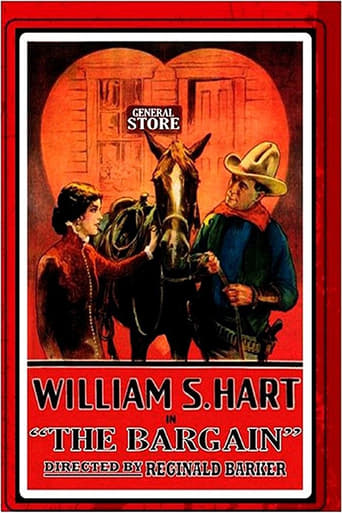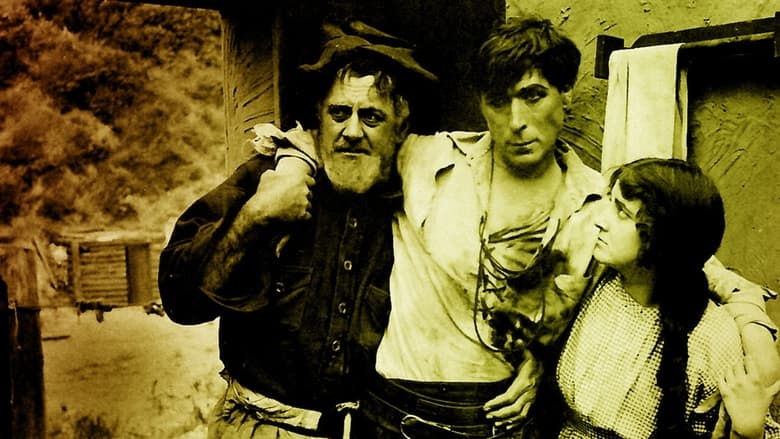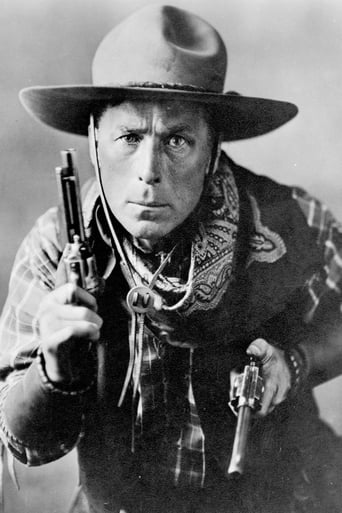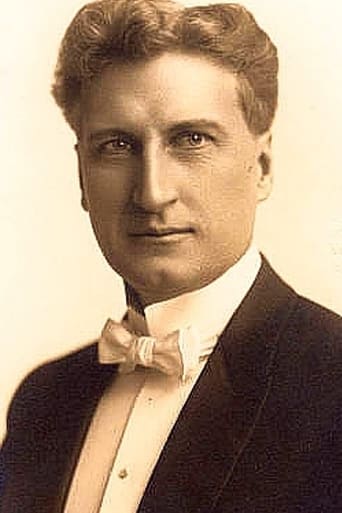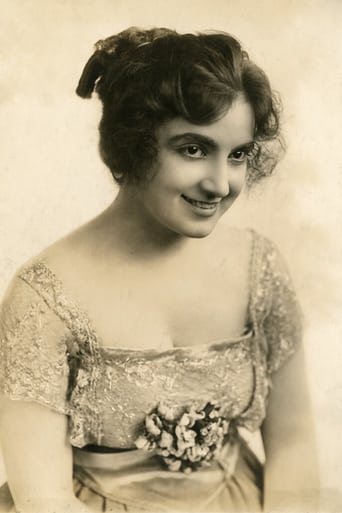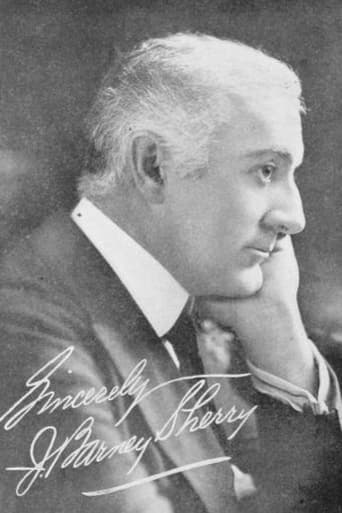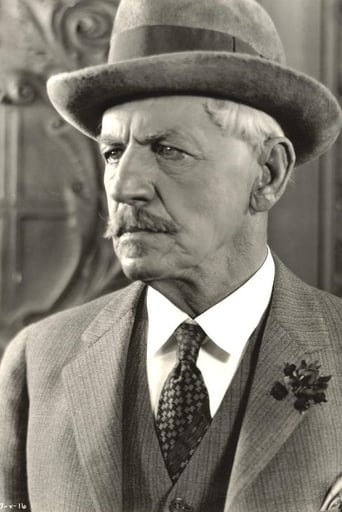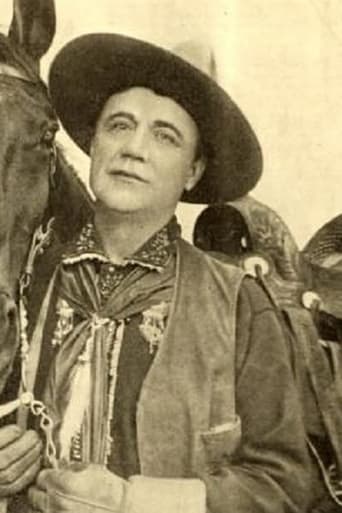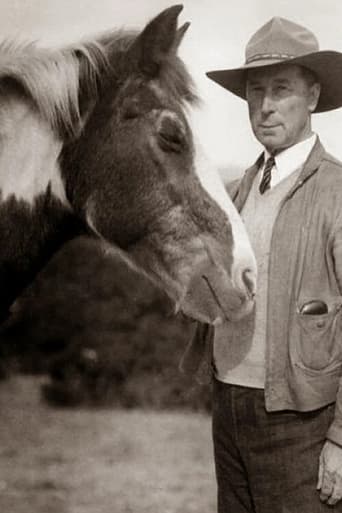After the bandit Jim Stokes robs the stage he is wounded fleeing. Recuperating at a ranch, he falls in love with and marries the daughter. Now wishing to go straight he tries to return the money but is recognized and captured. When the Sheriff then loses the recovered money at a crooked roulette table, he and Stokes strike a bargain.


Reviews
Bargain, The (1914) ** 1/2 (out of 4)After robbing a stagecoach, bandit Jim Stokes (William S. Hart) is shot but manages to make it to a ranch where a woman (Clara Williams) nurses him back to health. Stokes decides to marry the woman and go straight so he returns the stolen money to the Sheriff (J. Frank Burke) but he ends up losing it gambling so he makes a bargain with the bandit to clear both of them. THE BARGAIN probably has more history than entertainment to it but if you're a fan of silent Westerns or Hart then it's still worth viewing. The movie is best remembered today for being an early Paramount picture from producer Thomas H. Ince. It's also remembered for being Hart's first feature-length film but that there is some of the problem with the film. It's funny to see that even at this early part of his career Hart has no problem playing the bad guy willing to turn good for love. I thought Hart was very believable in the part and he managed to work both the good and bad in the character. I've always enjoyed seeing Hart play the bad guy even if the "performance" doesn't have to be that strong. That terrific face of Hart's perfectly gets across the coldness of his characters and he also manages to tell quite a bit with his eyes. The sympathy comes out of his eyes and this is especially true during the sequences where he's trying to make the woman understand that he does want to go straight. Williams is also very good in her role. The character isn't written all that great but the actress manages to be charming and it's easy to see why Hart would fall for her. There's a few action pieces sprinkled throughout but the majority comes towards the end when Hart must go into action over the double-cross. At 70-minutes I think there's no enough story to fully carry the picture as it really doesn't seem more like a three-reeler that has been stretched to the max just to be sold as a "feature", which is something that was common around this period.
After being wounded in a shoot-out, steely-eyed outlaw William S. Hart (as Jim Stokes) is found by prospector J. Barney Sherry (as Phil Brent). Mr. Hart lies to his rescuer, "I was chased by Indians and one of them got me," and is brought back to Mr. Sherry's Arizona cabin. There, Hart recovers from his wound, and falls in love with Sherry's pretty dark-haired daughter Clara Williams (as Nell Brent), who nurses him back to health. Reformed by love and marriage, Hart decides to return the money stolen before he was injured, but he is arrested by Sheriff J. Frank Burke (as Bud Walsh)..."The Bargain" is struck between Hart and Sheriff Burke, who loses the recovered money gambling - if Hart will help him get the money back, the Sheriff will let Hart go free. Variations of this intriguing moral/amoral storyline would be repeated in subsequent Hart features - a few were better, and more than a few were worse; "The Bargain" got there first. The Thomas H. Ince production benefits from the Arizona location photography (shot in the Grand Canyon) by Joseph August. The unusual opening "credits" were not original, but they seem like a perfect introduction to the picture.****** The Bargain (12/3/14) Thomas H. Ince, Reginald Barker ~ William S. Hart, J. Frank Burke, Clara Williams
The Bargain was the first feature film William S. Hart starred in, but after watching him a while you would swear he was an old hand at this sort of thing. He was certainly no novice at acting: Hart had been a traveling stage player for more than twenty years before this screen debut, barnstorming the country in everything from Shakespeare to "Ben-Hur." And unlike some of the pseudo-cowboys, the ones who who dressed up for the movies but knew little or nothing about life west of the Hudson River, Bill Hart was intimately familiar with the American frontier. When he was growing up in the mid-19th century his father worked as an itinerant mill hand in remote sections of Illinois, Iowa, Minnesota, and Wisconsin, in unsettled areas with few white settlers. Little Bill grew up playing with Sioux children. He learned some of their words and also became adept at Indian sign language. (Amusingly, in later years the actor Iron Eyes Cody asserted that Hart's signing was over-embellished and that, in short, he "signed like a woman." If Hart was aware of this opinion, his response was not recorded.) By the time he made his movie debut, well into middle age, Hart had established himself as one of the top interpreters of Western roles on stage, and he was eager to conquer the new medium. He appeared in a couple of short films before making The Bargain, but seemed to regard this feature as his true movie debut. The opening credit sequence certainly underscores the sense of a new career for the leading man: all the major players, starting with Hart, are first seen in formal contemporary attire, standing before a stage curtain. As each actor bows low, a cross-fade occurs, and he or she rises in the character makeup and costume they will wear in the film. It's a charming device, and one that serves as a perfect metaphor for this important juncture in Hart's career.The story concerns an outlaw named Jim Stokes, commonly known as the "Two-Gun Man," who has been robbing stage coaches single-handed. The opening sequence quickly establishes a few points about Stokes: 1) when it comes to hold-ups, he relies on clever strategy as much as sheer nerve and fire-power to achieve his aims; 2) he fires his gun at an opponent only once, and wounds him rather than killing him; and 3) he's damn good at this. Stokes is the first of Hart's "good-bad men," and when he makes a run for it we find ourselves rooting for him to escape the law. He is wounded in his flight, and takes shelter at a shack with a prospector who -- wouldn't you know -- has a beautiful daughter, Nell (Clara Williams). Stokes' protectors are unaware of his identity, and as Nell nurses him back to health he reconsiders his way of life and decides to reform. He and Nell marry, and he goes into town to return his stolen money to the express company. In many of Hart's later films his bad guys (who were never truly villainous) would go straight under the influence of a good woman, and somehow he always makes this scenario feel plausible.In town Stokes is recognized and captured by Sheriff Bud Walsh, who handcuffs him to a bed in an upstairs room over a saloon/gambling joint. The scenes in this saloon are rich in atmosphere, highlighted by an impressive camera shot, an extended pan across the expanse of the place that reveals the shabby decor, a couple of well-dressed dandies, some gamblers, a couple of hookers, a few Mexicans segregated in their own section, and other well-observed elements that give this milieu a taste of realism which later Hollywood Westerns could only aspire to. Bill Hart was there, and in his films you get the sense you're looking at frontier life as it was actually lived.The scenes between Stokes and the sheriff point up another motif that would become familiar in Hart's work: just as Stokes isn't so bad as he seems at first, Sheriff Walsh isn't such a model of civic rectitude himself. While his prisoner is held captive in the room upstairs, the sheriff visits the gaming wheel and we come to realize the man has an addiction to gambling. When he loses all his own cash, Walsh dips into the express company money which was in his keeping, and when that is all gone the man is in serious trouble. Eventually, he and Stokes make a startling pact that benefits them both and leads to an ending that is both satisfying and uplifting, though not without its ethically dubious aspects.I was fortunate enough to see this film at a recent screening at the Museum of Modern Art in NYC, and am pleased to note that it has been beautifully restored, and looks as good as any film of its age I've ever seen. William S. Hart's Westerns are among the real treasures of the silent screen, generally intense and often quite moving, and it's a pleasant surprise to find that his very first starring feature is among his best.
William S. Hart had already honed his acting and Western credentials on the stage. "The Bargain" was his first feature-length film, and the basics of his usual formula are already present. Hart is the "good bad-man", who is reformed once in the presence of a pure woman. The prototype for the "good bad-man" had already been introduced to the screen by "Broncho Billy" Anderson, but from what I've seen from these two, Hart far surpassed his predecessor. It's easy to see why Hart was so successful; his acting is more restrained than that of the other players. (Clara Williams is okay, too, though, and starred in other Hart films.) His worn face allows him not to stare into nothing in an attempt to convey emotion, as others do here.There's crosscutting action, too, with outdoor shooting. At that time, filming outside is preferable for everyone: it's cheap for the studios, especially so with Westerns, and the camera is, theoretically, freed from the missing wall and cramped space of studio sets. The beautiful landscape is more prominent and overwhelming here than in later Hart pictures. Yet, oddly, the most virtuosic shot happens inside: a one-minute panorama within a saloon.
